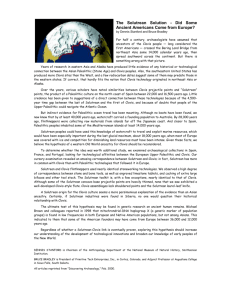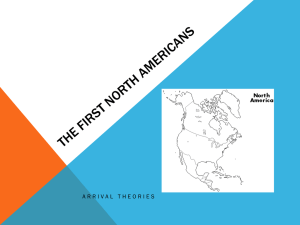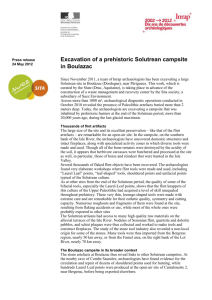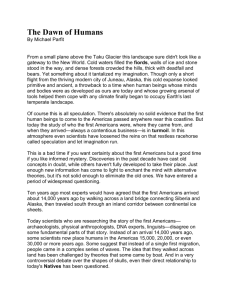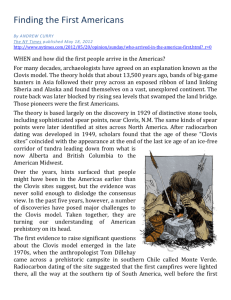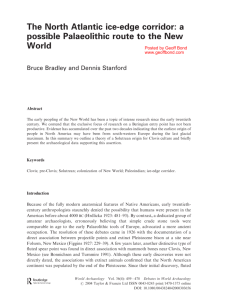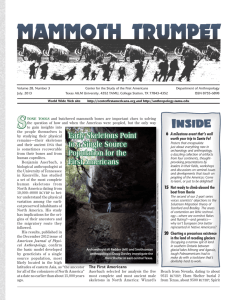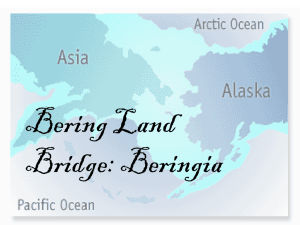On the Peopling of the New World
advertisement
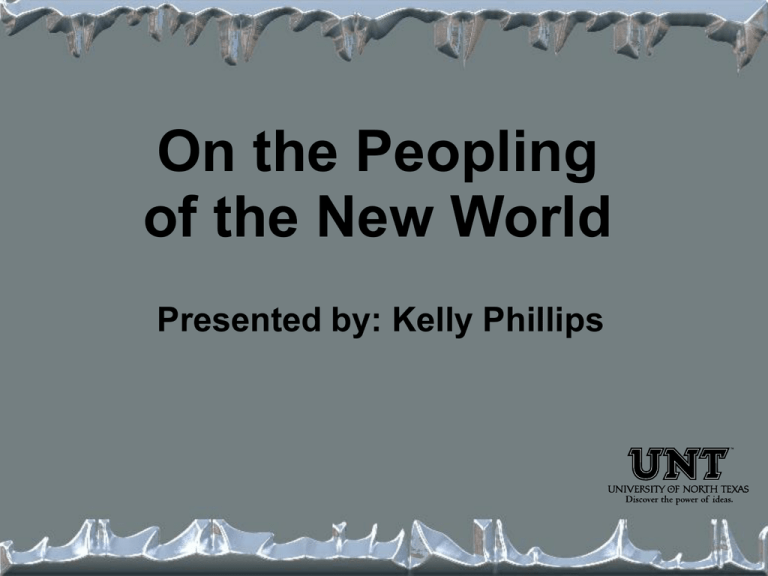
On the Peopling of the New World Presented by: Kelly Phillips Three Models: 1. Clovis First 2. Pacific Coastal Migration 3. Solutrean Origins Clovis First - Proposed in the 1960’s by Haynes - Also known as “Bering Land Bridge Theory” and until recently has been the accepted model - Due to lowered sea levels during the Last Glacial Maximum (LGM) people were able to walk from Siberia along a land bridge to North America around 11,500 BP Why we know Clovis was NOT first: - For the Clovis First Model to be true, no site should predate 11,500 BP - BUT, at least a dozen sites have been found that predate 11,500 BP - The most commonly known of these being Monte Verde in south central Chile which has conclusively been dated to 12,500 BP using stone tools, wood tools, and fire pits - People may have come over the “land bridge”, they were just not the “first” Pacific Coastal Migration - Discovery of coastal occupations led Fladmark to this model in 1971 - Erlandson’s evidence: Daisy Cave 10,600 BP Pacific Coastal Migration: Problems and Responses Two Main Problems: 1) Where is the proof of this seafaring technology and what route did they take? 2) Aren’t we looking for sites older than 11,500 BP ? Responses: 1) Honshu, Japan 21,000 BP; Kelp Highway 2) If they existed they have been washed away… Solutrean Origins - First proposed by Jelinek; Now Stanford and Bradley - Solutrean people of France and Spain (21,000 to 18,000 BP) migrated to the Americas and subsequently became the Clovis culture - Most recent (and criticized) theory Solutrean Origins: Stone Tool Comparison - Stone tool technologies have a precursor. If Clovis originated in Asia then we should find it there. - However, researchers have found no connection to date from collections in Eurasia, Asia, or the Far East. - Stanford and Bradley turned to Europe and found the similarities between Solutrean and Clovis stone tools Solutrean Clovis Solutrean Origins: Migration Route - Atlantic ice rim that stretched from the Southwest coast of Ireland to the Grand Banks off the coast of Newfoundland What evidence is there of a seafaring culture among the Solutreans??? - Environmental conditions of the LGM forced the Solutreans to look to the sea for a new food source - After becoming skilled fisherman they began traveling further and further until they reached the New World Solutrean Origin Critiques - Glacial environment was not conducive to human existence - No evidence that the Solutrean hunted deep sea fish or marine animals - No evidence of boats or the technology to build them Solutrean Origins or Not, East Coast Has Oldest Sites Examples: - Topper, South Carolina (20,000 BP) - Meadowcroft Rock Shelter, Pennsylvania (19,000 BP) - Cactus Hill, Virginia (15,000 BP) What Do I Think??? - Solutrean Origins seems most plausible - BUT, we still need more sites and more convincing evidence to be sure - My solution: Could it be that both models are right? Scholars should look for evidence that both migrations occurred simultaneously instead of arguing who was “first” Sources: Bonnichsen R., Lepper B.T., et al. 2005 Paleoamerican Origins: Beyond Clovis. Texas A&M University Press, College Station, Texas. Bower B. 2004 Early New World Settlers Rise in the East. Science News 157:244. Carey B. 2006 Ancient People Followed ‘Kelp Highway’ to America, Researcher Says. LiveScience. Erlandson J. M. 2001 The First Americans: The Pleistocene Colonization of the New World. Anatomically Modern Humans, Maritime Voyaging, and the Pleistocene Colonization of the Americas. California Academy of Sciences, San Francisco, California. Marshall E. 1990 Clovis Counterrevolution. Science 249: 738-739, 741. Meltzer D. J. 1989 Why Don’t We Know When the First People Came to North America? American Antiquity 54:471-490. Stanford D., Bradley B. 2002 The First Americans: The Pleistocene Colonization of the New World. Ocean Trails and Pacific Paths? Thoughts About Clovis Origins. California Academy of Sciences, San Francisco, California. Straus L. G. 2000 Solutrean Settlement of North America? A Review of Reality. American Antiquity 65: 219-226. Turner C. G. 2003 Three Ounces of Sea Shells and Once Fish Bone Do Not a Coastal Migration Make. American Antiquity 68: 391-395. Presenter and Mentor Information Student: Kelly Phillips Geography Major, College of Arts and Sciences Mentor: Dr. Reid Ferring Geography Department, College of Arts and Sciences
